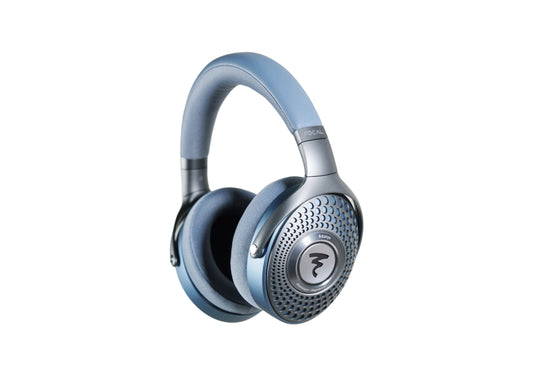Focal Lensys Professional: Better than Azurys?
Focal's Lensys Professional is a new closed back headphone that looks very similar to Focal's new Azurys—listener's Best Headphone of 2024—but is $150 more expensive. Which raises the question: which is actually better?
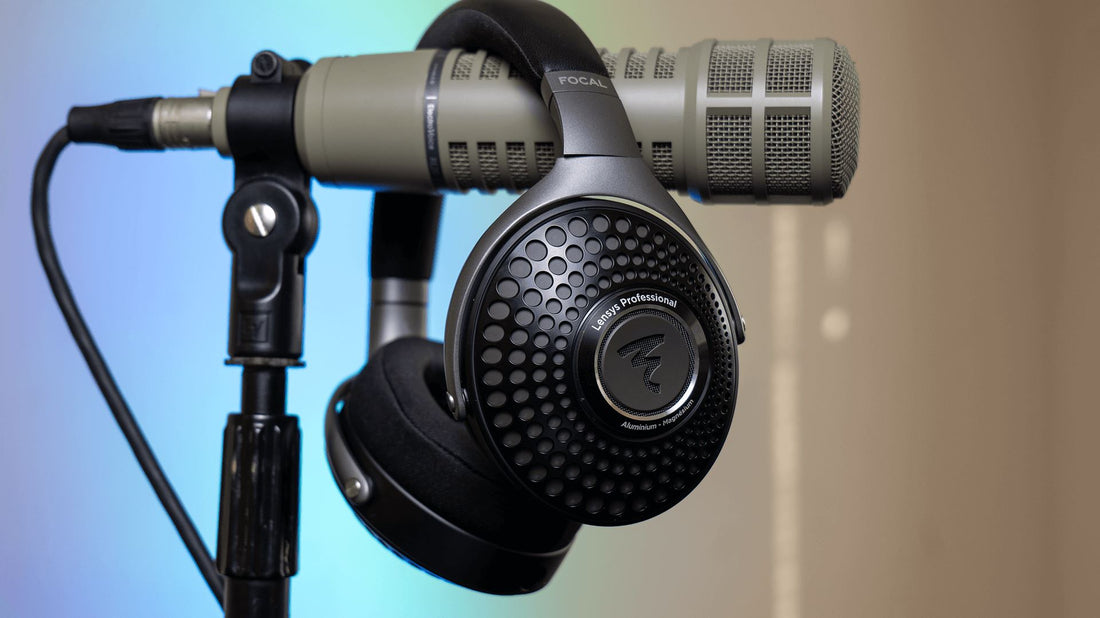
One could say the obsession with headphones that has led me to the Lensys Professional crystallized most strongly when I first tried and bought the Spirit Professional, Focal’s $350 closed back studio headphone from back in the “InnerFidelity” era.
The Spirit Professional was uncomfortable, fragile, and had a strange finish on the earcups… but the sound was addictively dynamic, and the tone was no slouch either. It was my favorite headphone, and I loved it so much that even though it kept breaking, I just kept buying it until it was discontinued.
In many ways, the Azurys ended up building on that sonic legacy while being much more comfortable, robust, and transportable, which is why it got my nod for 2024’s Headphone of the Year. But I’d be lying if I said the part of my brain captured by the Spirit Professional years ago wasn’t uniquely drawn to Focal’s new Lensys Professional, which shares the Azurys chassis but in a black colorway and with a notably higher price tag of $699 USD.
But with this price difference comes the inevitable questions: Is the Lensys actually $150 better? How is it even different to begin with? Well, long story short, I bought a Lensys to find out. So let’s dive in.
What we like
- Reasonable frequency response tuning
- Potentially better for subjective sound depending on priorities
- One of Focal’s best looking headphones
What we don’t like
- Similar to Azurys, Lensys is a very clamp-sensitive design
- Not as smooth sounding as Azurys
- Likely not worth the extra $150 unless you really prefer the color
Build, Design, Comfort, and Accessories
In terms of accessories, the Lensys comes with an almost identical accessory package to the Azurys, with the only difference being that the Lensys comes with two cables instead of just one; a fairly thick coiled cable, as well as a simple straight 3.5mm to 3.5mm TRS cable. The latter is different from the one that comes with the Azurys, as the “amplifier” side of the cable isn’t angled like the Azurys cable, and also lacks a play/pause control on the cable.

I might be alone in this but I don’t hate the coiled cable, but I mostly listen very close to my sound source (laptop), so excess cable slack is a bigger bother to me than a cable being too short/heavy. That said, the coiled cable is a bit heavy, so I think I and most other people will likely find the straight cable preferable. I didn’t have an “always” preference between them, but it’s worth saying that I prefer both to the incredibly inflexible Elex, Clear, and Utopia cables of old.
Touching on the design, I can’t detect any meaningful differences between Lensys Professional and Azurys other than colorway. They use, as far as I can tell, the exact same materials throughout their entirety, thus people who have a certain opinion of Azurys’s design will find the Lensys to perform identically in this respect aside from color. After having both at home, I do prefer the look of Azurys, but I can absolutely see why some people would prefer the more neutral look of the Lensys. If the Azurys didn’t exist, Lensys would be my favorite looking of Focal’s current lineup.
While both are similarly identical in build as far as I can tell, it’s worth noting one thing in particular because it will come up later: Lensys Professional has noticeably less clamp than Azurys, and it’s hard to know if this difference is intentional or just an issue of production tolerance since every other aspect of build is seemingly identical. This did affect the comfort of Lensys, but for the worse; Lensys feels less stable on my head and slides around more than I’d like, while Azurys (at least the one I have here) feels more secure and doesn’t move around as much.
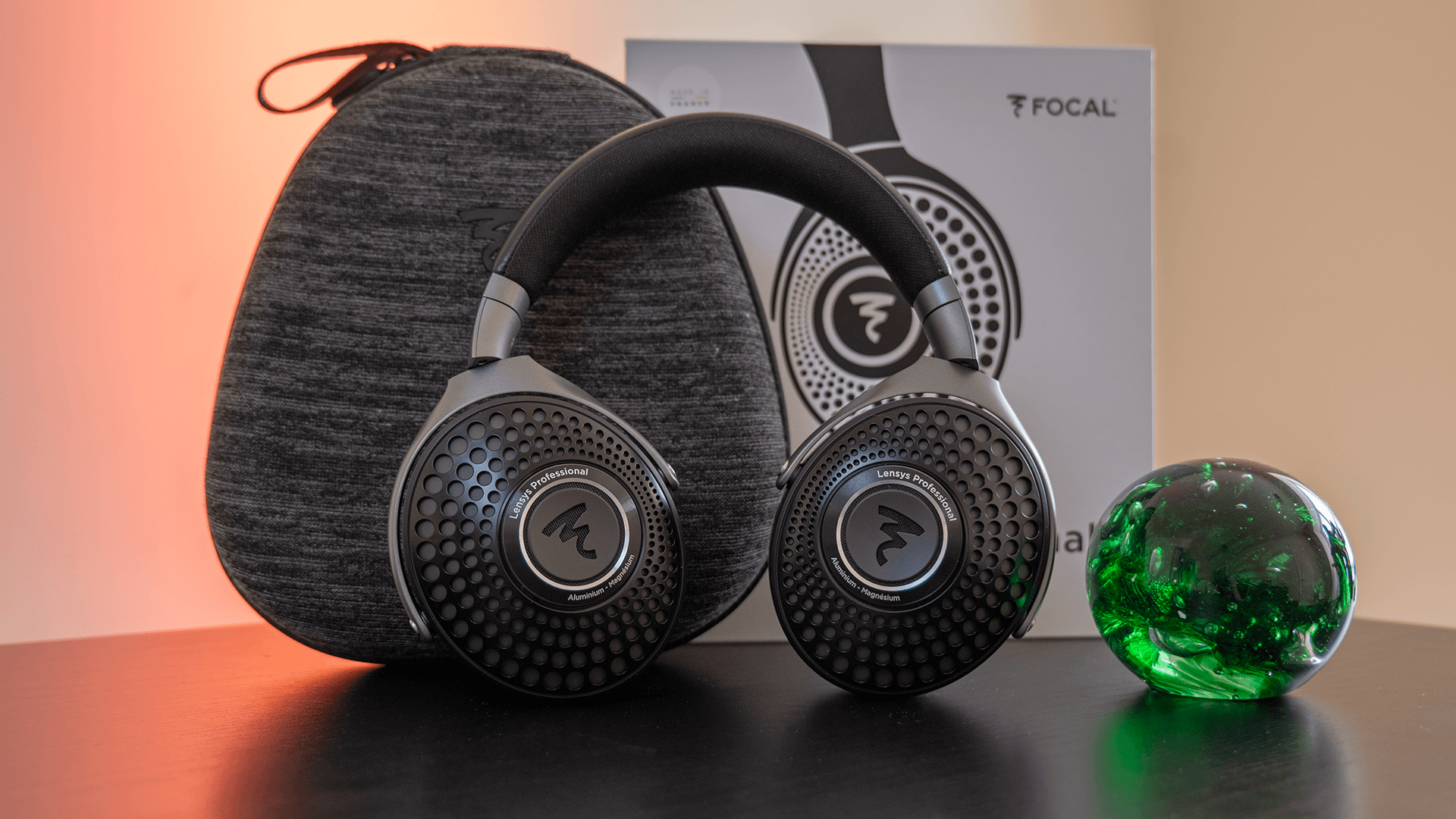
The downside with both of these designs is that, even though they’re lighter than any of Focal’s other closed headphones, the headband is way too thin in surface area on the front-back axis, so both the Azurys and Lensys Professional cause pretty nasty hotspots on my head with basically the exact same severity and quickness. This is true of the Bathys and Hadenys as well, at least for me.
That’s why you’ll see both headphones equipped with Capra Straps from Capra Audio in the below picture. This strap has effects on the sound—which we’ll get into later—but they also significantly improve top-of-head comfort for me. But be warned, the Capra Strap won’t work for everyone for a few reasons.
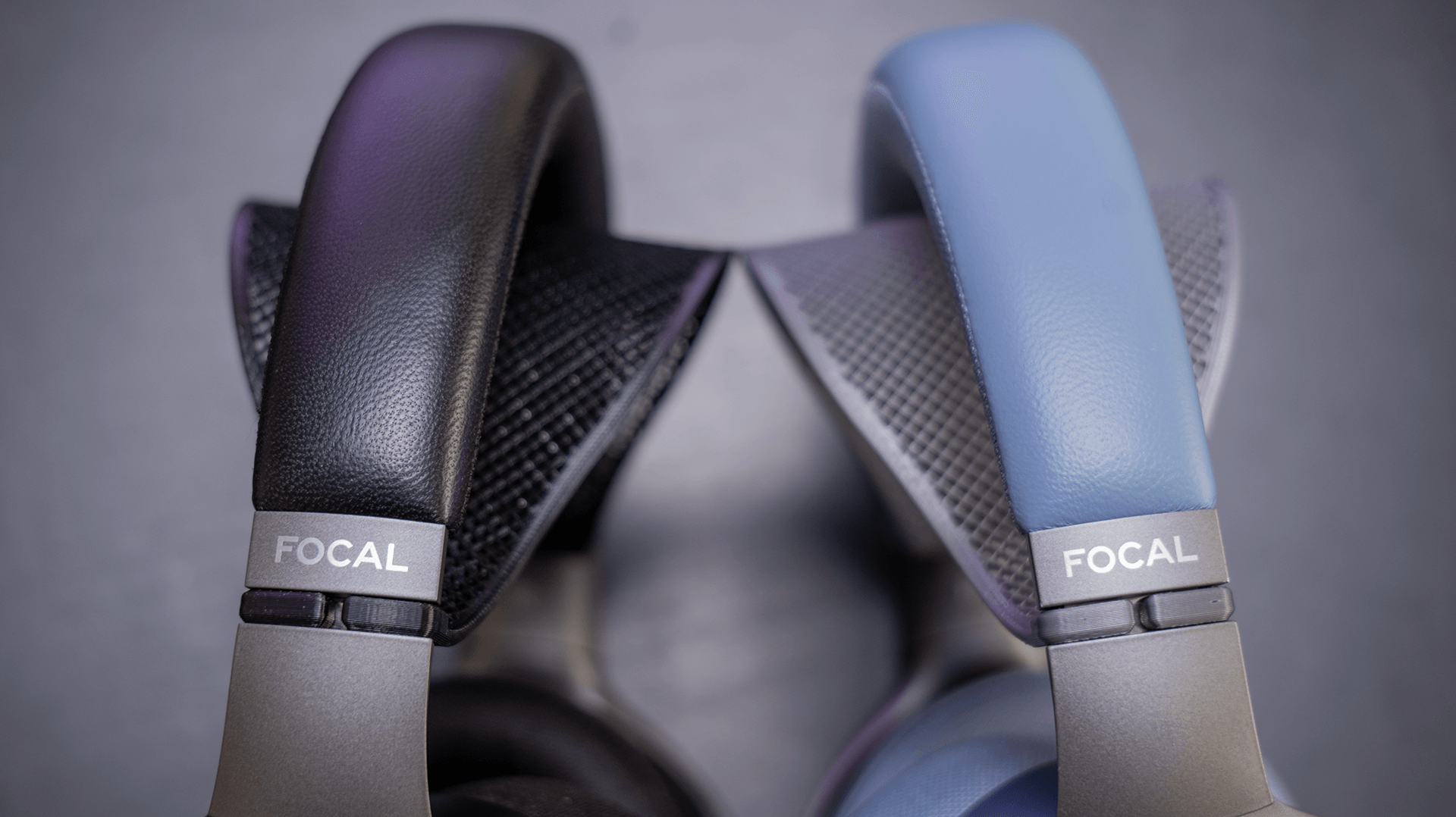
The first is that the Capra Strap reduces the amount of usable “headband clicks.” Without the strap, 5 clicks per side is ideal on my head, but with the strap I have to fully extend the yoke arms. So if you have a larger head like Resolve, this might not be an ideal solution—but there also might not be an issue for larger heads to begin with, as Resolve finds Azurys quite comfortable.
Some may also find the increased clamp as a result of upward force on the strap bringing the cups inward to be a bit much, though this was a benefit for me as with the Lensys in particular I was bothered by how much the headphones moved, so the extra clamp helps them stay put.
Overall, I think I prefer Azurys over Lensys in terms of the non-sound factors. The out-of-the-box comfort is better for me, it’s a more fun visual design, and the extra cables that come with Lensys aren’t worth the extra money you’d spend to get them. Now let’s move to the sound, because this is where the differences become even more nuanced.
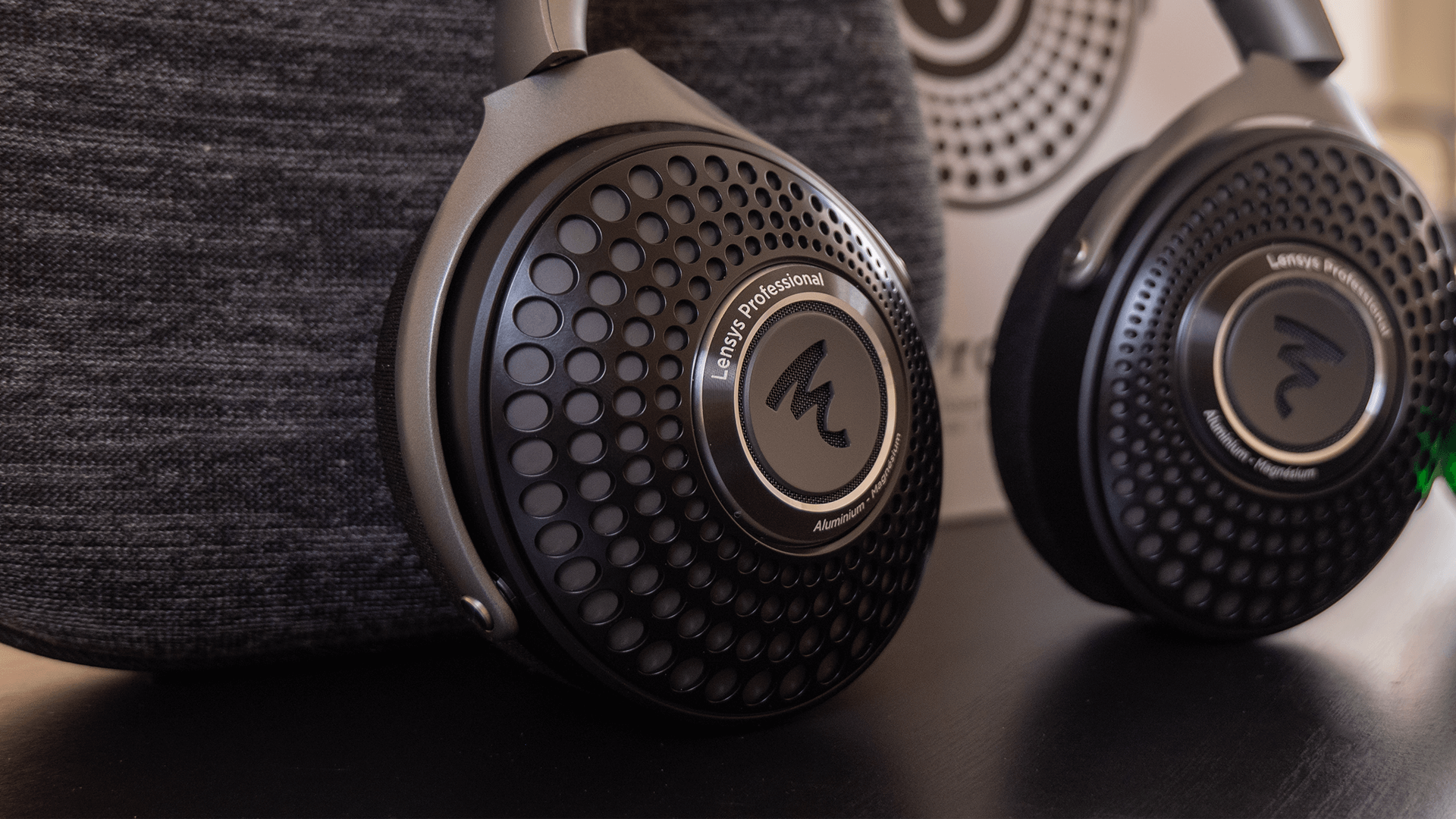
Disclaimer Before Sound Section
Evaluating this Lensys relative to this Azurys is tricky because the measurements I’m getting seem to indicate that some of the differences in sound I’m experiencing might be explained by things that are not actually design differences inherent to the headphones.
Both of these headphones are very sensitive to the headphone’s caliper pressure on the head it’s placed on, and how that affects the size of the air volume your ear sits in. As clamp rises and the inner earpad air volume gets smaller, you get more lower midrange and less treble. And as clamp loosens and the inner earpad air volume gets larger, lower midrange gets reduced and treble increases.
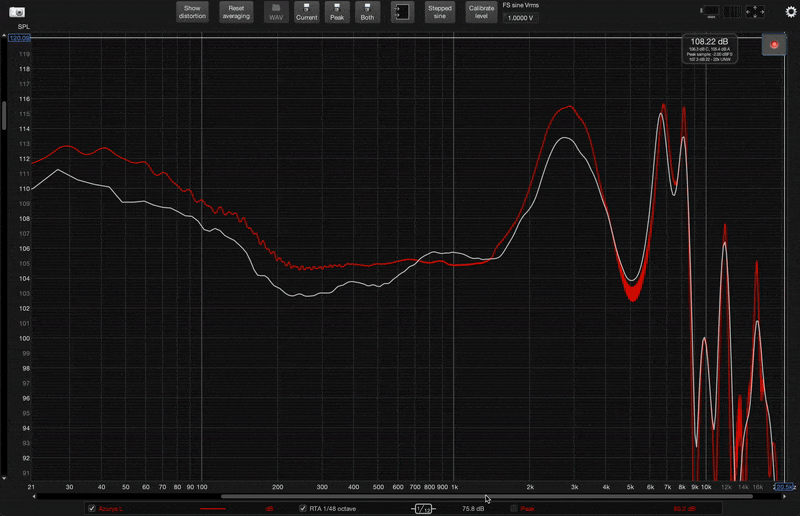
Real-time analysis of Lensys Professional (white) with clamp gradually increasing, relative to Azurys (red)
These headphones are acoustically similar enough that I could get them to measure quite closely just by changing the amount of clamp force. Based on the amount of clamp, Lensys can measure colder/thinner or warmer/thicker than Azurys, and vice versa.
When you add to the equation that this particular Lensys has noticeably looser clamp than the Azurys I have on hand, and the Lensys is brand new while the Azurys belongs to DMS (and thus, has some level of pad wear), it gets a bit hairy to compare them.
I don’t want to set a precedent by saying “if one headphone’s sound exists within the positional variation of another headphone’s sound, they are functionally identical” because we already know this isn’t the case with things like the HD 600 and HD 650 (many listeners enjoy one, but not the other).
However, it does make evaluating the Lensys a little harder than I would have liked, and it does mean I want to caveat the upcoming impressions with a little asterisk to let readers know their impressions may well differ based on the size of their head, the clamp force of their particular Lensys/Azurys unit, or both.
Is Lensys an Upgrade re: Frequency Response?
Both headphones shown below with Capra Strap added to better reflect the comparison as it may have occurred on my own head when testing. I chose to use the Capra Strap because for the Lensys in particular it made it more comfortable on my head, adding stability, while also improving the sound.
Note: These two headphones are quite similar, and because the measured difference between them is so minor and changeable based clamp variation’s effect on this design, the above difference could simply be down to unit variation and it would be hard for me to confirm or deny this with the units I have on hand.
Starting with the bass, I actually think this is where the most consistent difference between the two headphones shows up regardless of clamp—this Lensys has around 2dB less bass than the Azurys, and it’s enough that I do notice that this as a consistent difference in tone and presentation.
Speaking more to the impression of bass instruments than bass frequencies themselves, the difference here is audible but not solely due to difference under 200 Hz. Kick drums sound a little clappier due to reduced bass, but also slightly increased center-midrange presence and slightly boosted treble relative to Azurys. On super-fast mixes where there’s a lot of transients being thrown around I find the Lensys to be a little faster on the uptake and precise in the decay due to overall being a slightly thinner tune, but this doesn’t come without its downsides.
Electric bass guitars are probably one of the highlights of Lensys. There’s still a bass shelf to lend enough emphasis to bass fundamentals/first harmonics, but the aforementioned center-midrange elevation also brings a slight bit of extra texture and snap to initial clack of pick attack or the growl of amp distortion. I find bass guitars to just have a slight bit of extra “snarl” to them, and this coloration that causes this also tends to just make basses sound a bit more clear and present overall.
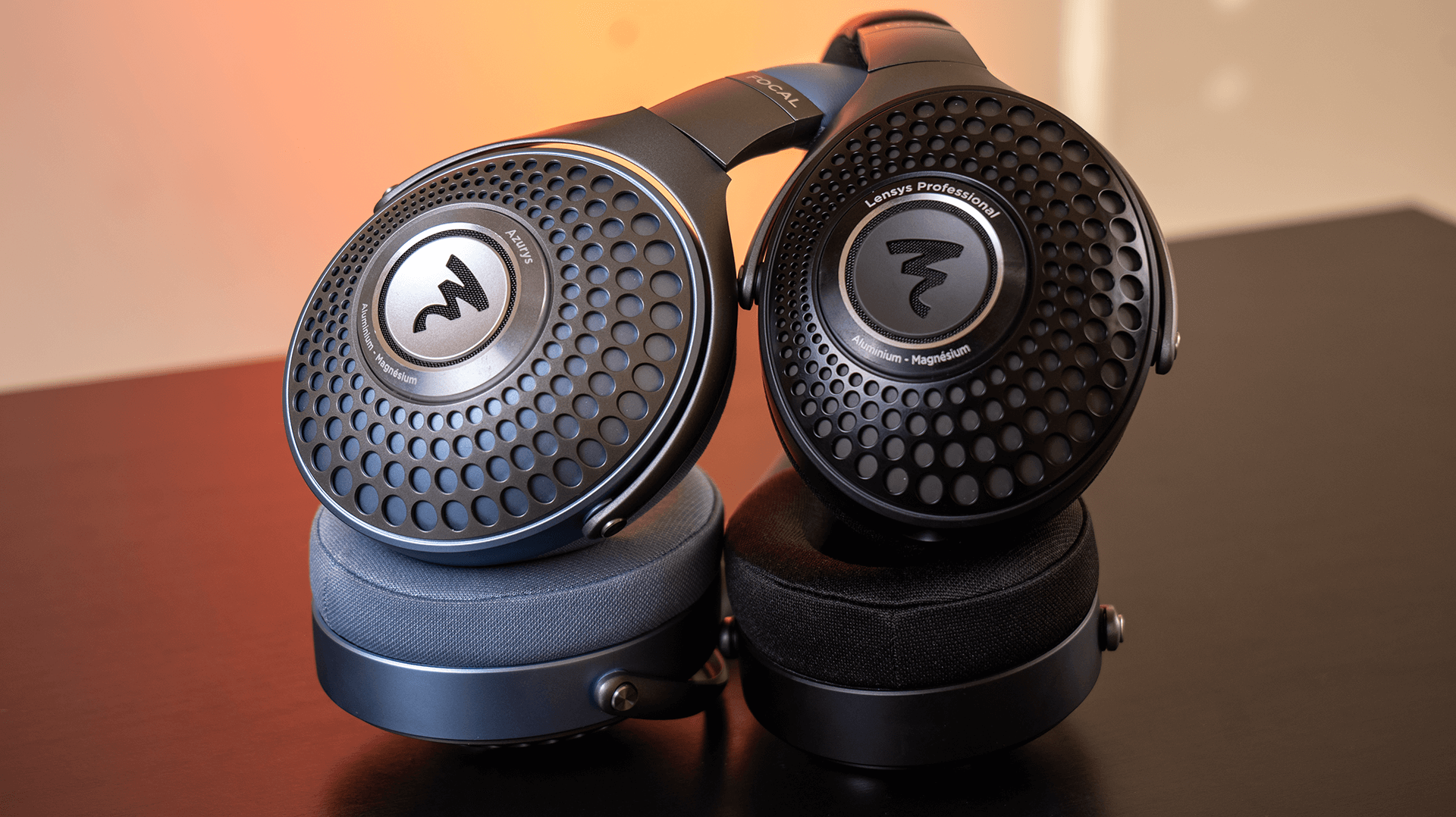
Moving to the midrange, this is where I start to find a few faults with Lensys that I don’t experience with Azurys. The first downside I noticed with Lensys is that snare drums sound a little too focused on their “crack” and tightness relative to Azurys’s fatter snare presentation. Male and female vocals are both a little bit too thin for my preference, having too much translucence and weightlessness, whereas this definitely isn’t an issue on the Azurys.
Electric guitars sound a little too biting and wiry as well, often sounding like the amp’s speaker has been downsized a bit or that the microphone is a bit further away. This feature of Lensys is partially offset by the slight reduction in the 2 kHz region, but this reduction also has a bit of a negative effect on clarity, adding a slight muffled effect to the texture of guitars and drums.
One of the things I love so much about Azurys is that it doesn’t have the lower-midrange suckout typical of most closed headphones. While the Lensys’s lower-midrange definitely isn’t nearly as sucked out as other closed back headphones, I do find it to be a bit recessed here for my taste.
This tends to make most things that have both midrange and bass presence—bass, kick drums, and male vocals—sound a little incoherent and “skinny-fat.” They all have a fairly generous helping of bass/fundamental energy, while subsequently having thinness in the first few harmonics that makes them sound a bit hyped, almost like a poorly integrated subwoofer.
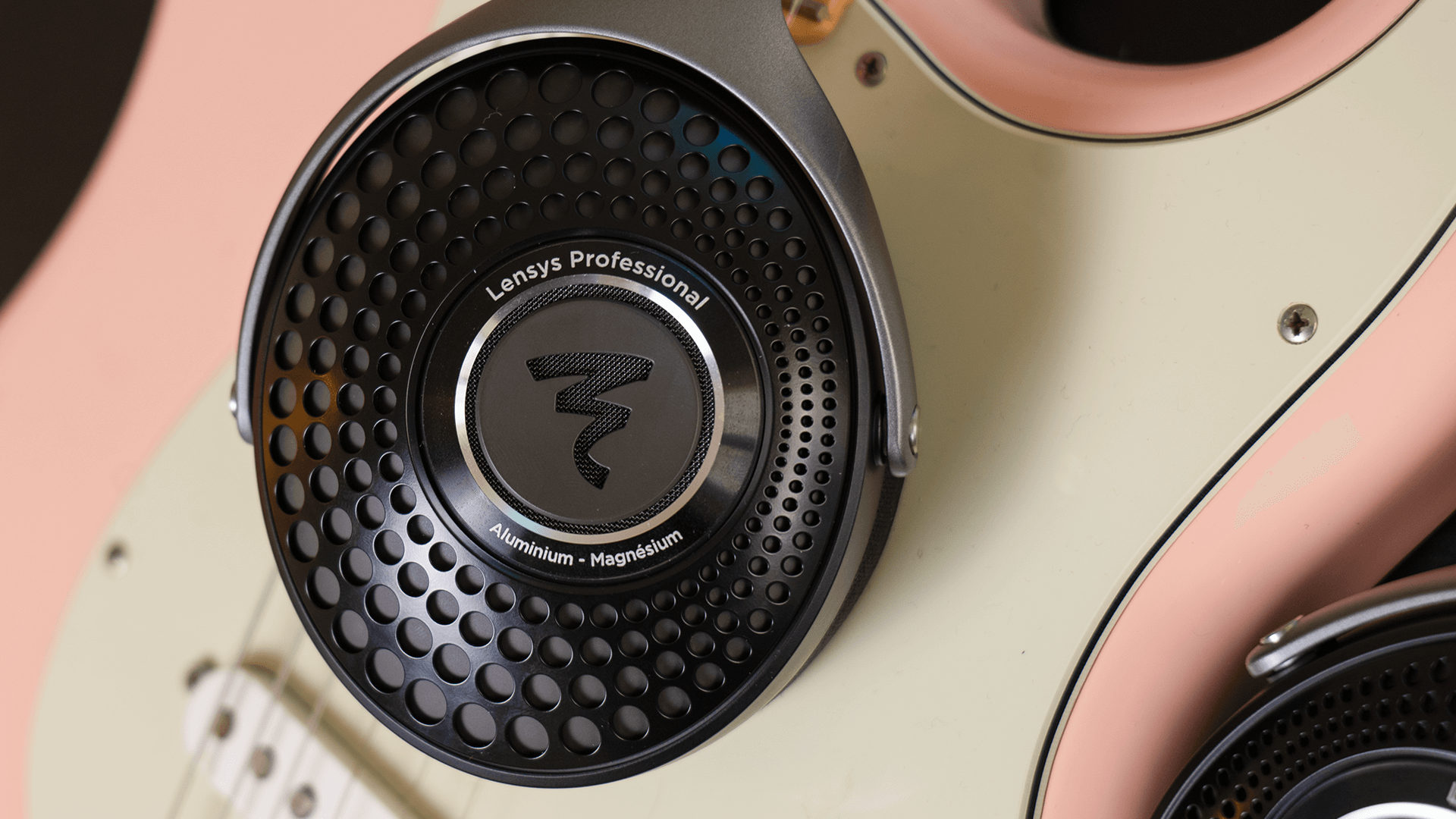
I wouldn’t be surprised if this coloration also contributes to some good qualities for listeners too, though. I could see the Lensys being a bit more “dynamic” feeling to some due to the more distinct bass and more forward attack, but the main impression I get from this aspect of the tuning is a slight timbral incoherence and confused quality. It’s not totally warm, but it’s also not totally thin, yet sometimes—depending on the recording—it sounds like either… or both.
Touching on the treble, this was one of my favorite parts of the Azurys, and the experience I’m getting with the Lensys is similar, but not exactly the same. I’m getting a bit more energy in the 10-12 kHz region with Lensys that’s contributing again to it feeling like an overall faster (but thinner) listen, but this is an area I’m pretty sensitive to and the addition here also has negative effects. Specifically, vocals are more sibilant, wispier, and I’m feeling the imaging is a bit less precise because of it as well.
It’s also a bit too feathery on things like acoustic guitar and hi-hats, where the stringiness and sizzle get a bit over-emphasized and end up defining the timbre and transient character of these instruments a bit too much.
Overall, Azurys is a tonality that works better for me. The slightly warmer midrange and treble response is much more to my preference, and while the increased bass relative to Lensys is something I could probably do without, bass is the region I’m most willing to compromise as long as I get a midrange and treble response that works for me.
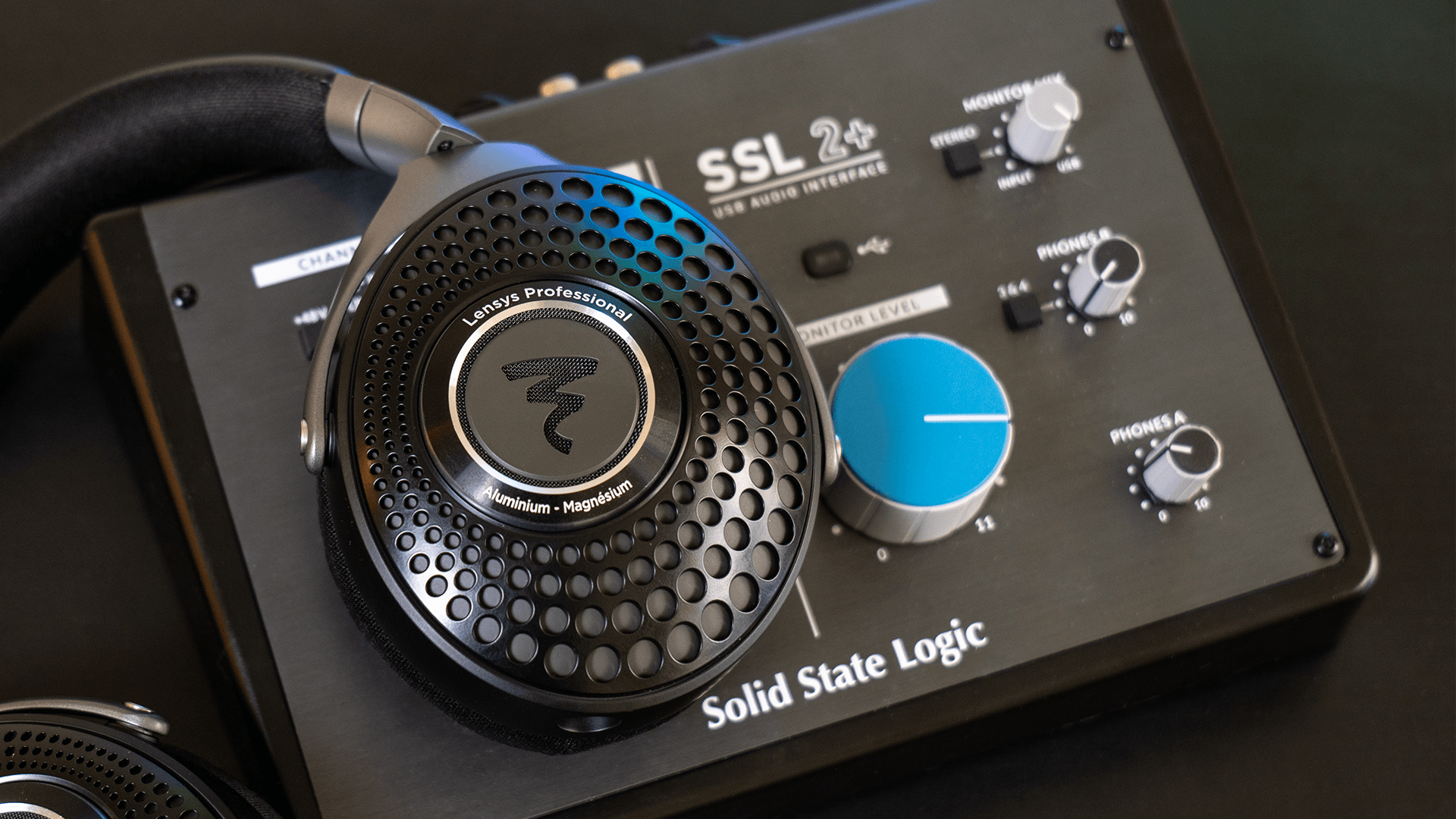
Is Lensys an Upgrade re: “subjective sound”?
Because this is where I might not be aligned with the average listener, I should outline my perspective: When it comes to audiophile closed back headphones, the flaws that tend to bother me are overblown/loose bass, sucked out lower midrange with boosted upper midrange, and raggedy or overly-resonant treble. This is where many of the options currently available on the market disappoint me, as even the “good” options tend to be, for lack of a better term, hyped sounding.
That said, I could see Lensys being a better headphone for the “subjective” stuff for a good amount of people, because what I call “flaws” above are often the same exact things that make people excited about how a headphone presents their music.
For example, while Lensys is tonally thinner, it is also (a bit) more punchy, with notably more precise and snappy feeling transients thanks to the reduced bass, low-midrange, and the slight increase in treble relative to Azurys. As mentioned prior, I noticed this character most on bass instruments like kick drums and electric basses, but it remained true in some capacity for most sonic elements in my music that Lensys portrayed.
In terms of spaciousness, this is actually where I feel the Azurys is just a slight bit better due to things sounding a bit less artificially close and the treble being more relaxed. Lensys’s slightly more hot 10-12 kHz area causes slight homogenization of image placement for me, and Azurys being less problematic in this regard does make a meaningful difference to the sense of spaciousness and ease of lateral image separation.
Furthermore, I could see listeners judging Lensys to be a clearer, more “detailed” presentation than Azurys depending on how the treble works for them, again because of the reduced bass and low-midrange. Additionally, while Azurys is better for me at picking apart images based on where they are laterally panned in the mix, Lensys is a bit better at separating two sonic elements placed on top of each other. While this quality, what I’d call “monaural separation,” as well as the aforementioned punchiness might make some judge Lensys more positively as an “audiophile” experience, for me it comes coupled with compromises to instrument timbre and makes Lensys an overall less versatile headphone than Azurys.
If this unit is representative, I’d say it’s not unlikely that Lensys will be regarded as more impressive for the “audiophile qualities” than Azurys is. Some listeners are willing to accept compromised tonality in order to allow for more excitement from their headphones, but as time has marched on, I have realized I am just not one of these people. For that reason Azurys works better for me most of the time despite not being quite as “exciting”.
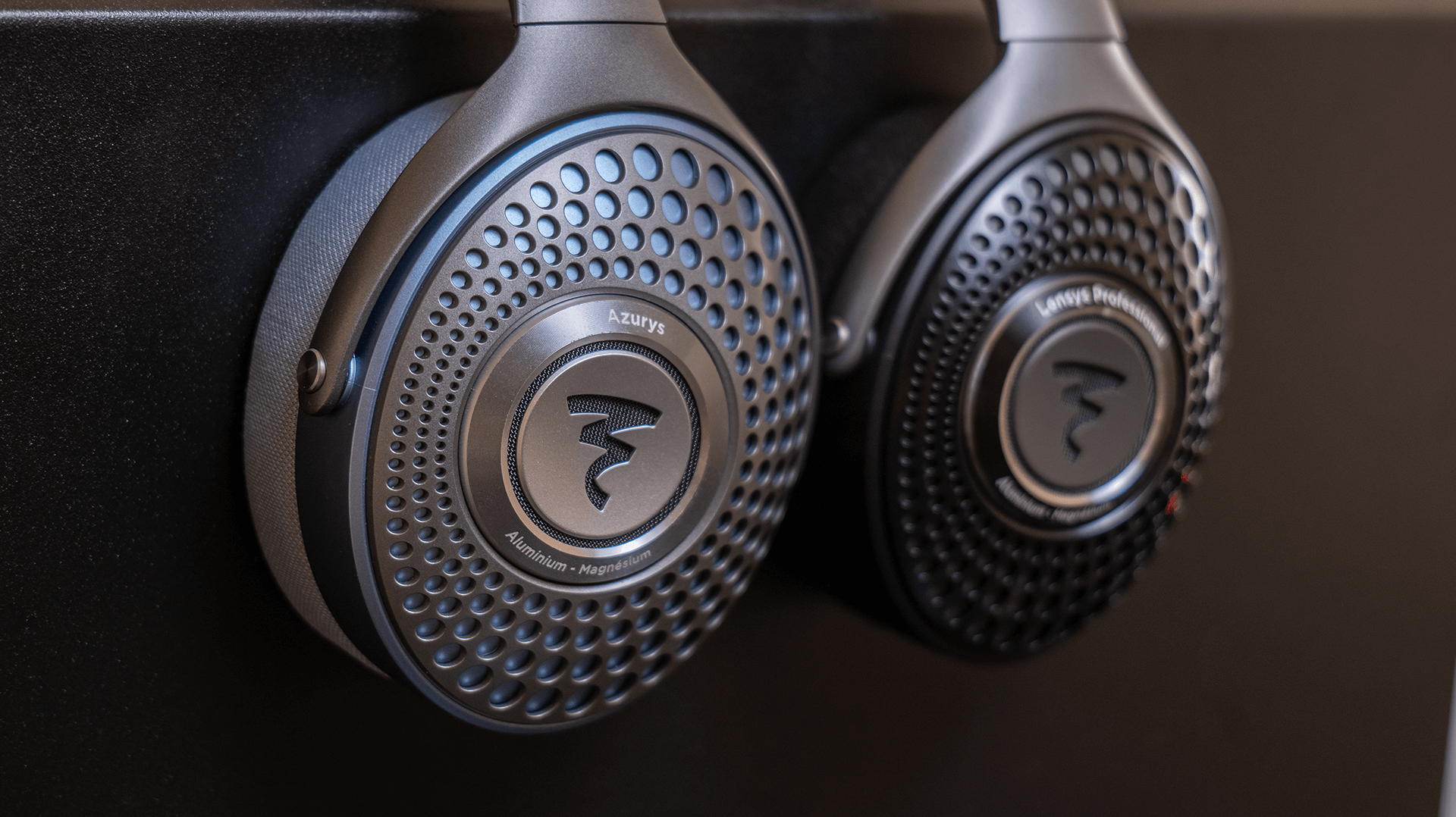
Conclusion
I want to reiterate yet again: These two headphones are very similar, and because the measured difference between them is so minor and changeable based on clamp variation’s effect on this design, the difference I’ve observed here could simply be down to unit variation, and it would be hard for me to confirm or deny this solely with the units I have on hand.
While I’m a bit hesitant to draw any robust, definite conclusions given how similar these headphones can sound, there are notable enough differences in my listening that I’m left feeling like I should regard them as having some meaningful level of difference… even if the level of difference is roughly the same distance between HD 600 and HD 650.
Some people—myself included—quite like one HD 6 series offering while not liking the other, and I think that could be equally true for the Lensys and Azurys. I personally prefer the Azurys over Lensys for most things, but I could see a compelling argument for someone preferring the Lensys, either because it calls more attention to things audiophiles like their headphones to highlight, or because they simply enjoy a leaner/brighter headphone than Azurys.
However, what I’m pretty confident in is that this difference in sound is not quite proportionate to the difference in price. Lensys is, after all, $150 more expensive than the Azurys, while sounding very similar. And at least in my opinion, it’d be paying more for a less versatile sound profile, while dealing with the same compromises inherent to the physical design of this lineup—top-of-head comfort and clamp variability.
Since the two are so acoustically similar, it’s likely that a very simple EQ change can close whatever perceived gap in performance I’m getting here. Additionally, because this difference could likely be minimized by altering the headphone’s clamp, it’s even harder for me to say the difference is worth the price.
So for now, I’m going to say if someone’s interested in the Lensys and Azurys, the Azurys is the one that will likely make the most sense for the most people due to the price. Azurys is also just… one of my favorite headphones, so I want to be clear: I still recommend the Lensys as a quite good sounding headphone. It’s just not as good a value when Azurys exists.
If you have any questions or want to chat about this article, feel free to start a discussion below on our forum, or ping me in our Discord channel, both places where you can find me and a bunch of other headphone and IEM enthusiasts hanging out and talking about stuff like this. Thanks so much for reading. Until next time!
